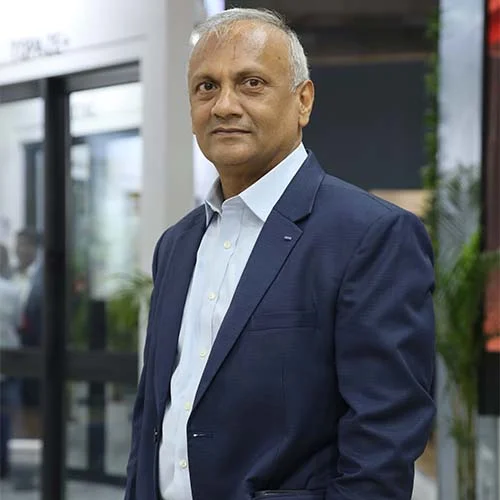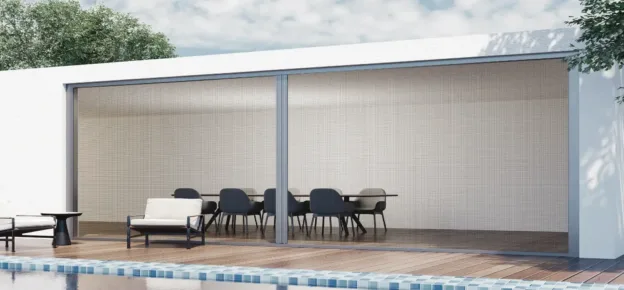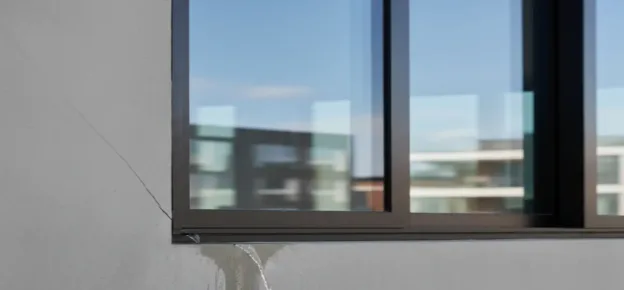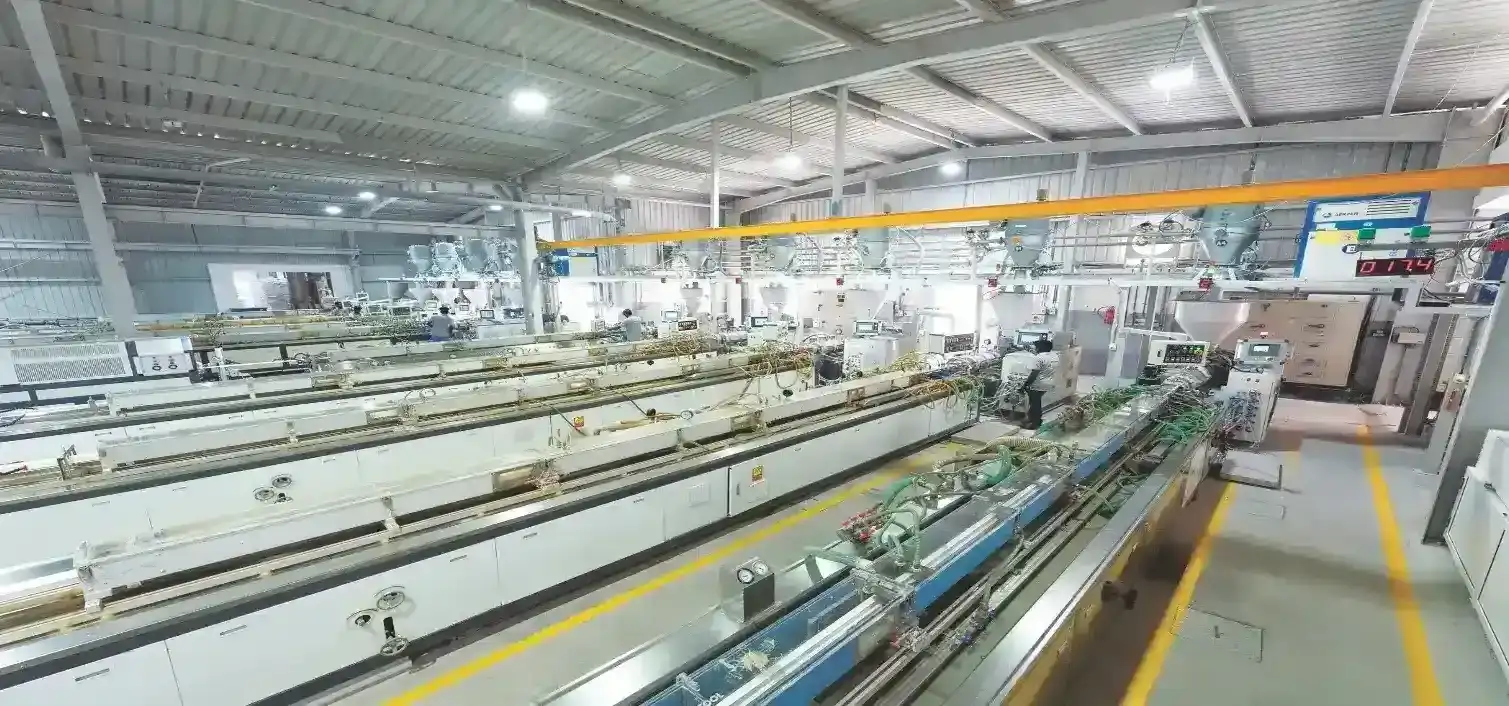
Shashidar Reddy is a founding member and the current Managing Director of Shakti Hörmann (P) Ltd. He holds a BA in Economics from Nizam College, Hyderabad (1982), and an LLB from the Prestigious Campus Law Centre, Delhi University (1986). As Executive Director, he spearheaded all sales and marketing functions until 2012 and was instrumental in establishing hollow metal steel doors as the preferred choice for both fire and non-fire applications in India. Through years of focused marketing efforts, he has helped grow the market from 10,000 doors per annum in 1994 to over 1 million today, encouraging other new entrants to expand the market.
He has also introduced wood-finish steel doors for the residential segment – an innovative product line – saving precious timber and supporting the cause of afforestation.
| “Our Journey Has Never Been Just About Doors – It Is About Setting New Standards In Safety, Sustainability, And Performance Across The Built Environment” |
In this exclusive interview with WFM Media, C. Shashidar Reddy takes us through the company’s remarkable journey from its early days as a pioneer in hollow metal steel doors to becoming a comprehensive door solutions provider in India. He shares insights into the challenges of market acceptance in the 1990s, the transformative role of sectors like pharmaceuticals and IT, their technical collaboration with Hörmann Germany and so on.

Shakti Hormann Has Established Itself As A Leader In Door Solutions In India. Could You Share How The Company Has Evolved Since Its Inception And Its Journey To Becoming A Trusted Name In This Sector?
We started in 1994 through a collaboration with a British-based company, Martin Roberts Limited, located in Sittingbourne, Kent. This partnership was largely technical. At the time, we were manufacturing hollow metal steel doors with a primary focus on fire doors.
Back in the 1990s, although fire regulations existed, the concept of a steel door – especially a fire-rated one – took a while to gain acceptance in the Indian market. Steel products were traditionally associated with fabrication and lacked aesthetic appeal, often being considered unsightly.
When we introduced the product in 1994–95, market acceptance was slow. It took time for people to understand that these doors could enhance commercial and residential spaces aesthetically. The first six or seven years were particularly challenging in terms of gaining market acceptance.
However, two key sectors played a pivotal role in shifting this perception — the pharmaceutical industry in the late 1990s and the IT industry shortly after.
Could You Elaborate On How The Pharmaceutical Industry Contributed To Your Growth?
During the late 1990s, the pharmaceutical sector in India experienced rapid expansion. Many Indian pharmaceutical companies began to export to the US market, which required their facilities to obtain USFDA approval.
The first Indian company in this space to receive such an approval was a Hyderabad-based subsidiary of Dr. Reddy’s Laboratories called Cheminor Drugs Ltd. The doors we manufactured for them were, in fact, India’s first cleanroom doors. Around 1997–98, Cheminor Drugs Ltd became the first Indian facility to receive USFDA approval.
Naturally, this set a benchmark. Other pharmaceutical companies started visiting Cheminor Drugs Ltd’s facility to understand what contributed to its success. Since doors are among the most visible elements in any facility, they stood out, and Pharma visitors would often ask, “Who made these doors?” At that time, our company operated under the name “Shakti Met-Dor Limited” – Met-Dor being short for metal doors – and we began to grow alongside the pharmaceutical industry.

What Role Did The IT Sector Play In Your Company’s Trajectory?
In the early 2000s, the IT and ITES (Information Technology Enabled Services) sector took off post-Y2K. Companies like Infosys, Wipro, TCS, Cognizant, and Accenture began expanding rapidly. This led to massive infrastructure development, and the construction industry evolved to support the speed and scale required.
For example, in the early 1990s, a one-million-square-foot facility usually took 3–4 years to complete. But by the early 2000s, such facilities were being completed, including interiors, within just 12 to 18 months. This speed demanded solutions that were factory-finished, high-quality, and quick to install – precisely what we offered.
We were fortunate to have the manufacturing capacity, the supply chain, and the installation capabilities to meet the IT sector’s demand for fast deliveries. Being at the right place at the right time truly worked in our favour.
Besides Timely Delivery And Quality, What Else Sets Your Company Apart?
One of our key contributions was educating the market about the importance of fire safety in buildings. The influx of global clients brought with it a demand for international safety standards. This, in turn, helped elevate the understanding among Indian architects, consultants, and project management companies.
To truly attract global tenants or partners, buildings needed not only aesthetic appeal but also robust safety and security features. Our focus on fire-rated steel doors aligned perfectly with this growing awareness. And this, I believe, was instrumental in our sustained growth, alongside the overall evolution of the Indian construction ecosystem.
As the awareness around safety standards grew, so did the demand, and naturally, this spurred the growth of several other players in the market. But as early adopters and educators, we had already laid the foundation for this transformation.

The Door Industry In India Has Evolved Rapidly Over The Years. Can You Talk Us Through Your Early Entry Into The Market And Its Impact?
The Indian market was expanding rapidly, and naturally, it needed many players to service the growing demand. We had the first-mover advantage and became one of the largest players early on. Our objective was always to improve fire standards in India, which became especially important as our buildings grew taller – 40, 50, and even 60-storeys. The risk of fire and threat to life in such vertical structures is significantly high.
We were also appointed to the IS committee to help revamp Indian Fire standards. The updated document was published in June 2021(IS 3614), and in my opinion, it matches or even exceeds global fire safety standards. We are proud to have contributed to enhancing a document that has remained unchanged since 1966. Today, this new standard is being widely accepted by architects across India as the benchmark for fire safety compliance.
Can You Tell Us About The Collaboration With The German Company And How It Transformed Your Offerings?
After 2012, a German family-owned company invested in our business and is now the majority partner. Technically, we are now a subsidiary of Hörmann Germany. This partnership introduced advanced technology, particularly in industrial doors and perimeter security segments that were not part of our initial product range.
Last year, ie,2024, we launched Engineered Wood doors from our Jaipur facility, which are made to European technical standards but designed to endure Indian conditions. A first of its kind in India!
Today, we offer comprehensive door solutions, covering industrial, commercial, and residential segments. We are no longer confined to one part of the market, which gives us a much broader footprint.

What Innovations Have You Introduced Across Your Product Categories That Differentiate You From Other Brands?
From a user’s point of view, a door might just be something that opens and closes. But for us, the difference lies in engineering, compliance, and safety. For example, in fire doors, we are probably the only company in India whose products are fully compliant with all fire standards and norms, be it Indian or international. That level of certification gives end users confidence that the door will perform in critical situations.
In the industrial segment, one thing that sets us apart is our unwavering focus on safety. Take high-speed doors – they operate at speeds of 3 meters per second. We integrate a light grill sensor in the side guides. If someone crosses while the door is descending, the sensor detects it and halts the movement, preventing accidents. Whether the customer asks for it or not, it’s a standard feature. This reflects our global quality benchmarks – what you get in Germany, you get in India.
In residential doors – whether wooden, engineered, or steel – we focus on long-term performance. Our doors don’t sag, peel, or suffer from termite damage. They are engineered to last decades, offering consistent performance and aesthetics.

You Mentioned Safety As A Core Principle. How Do You Ensure This Across All Product Lines?
Safety is not just a feature – it is part of the DNA of our products. Whether in control systems, input materials, or design, we build for life safety and security. We believe that every door should serve more than just opening and closing – it should protect, secure, and last.
What About Sustainability – How Green Are Your Manufacturing Processes?
Sustainability is central to our operations. Both our facilities – in Hyderabad and Jaipur – have received IGBC Platinum ratings, making us the first door company in India to earn such distinction.
We have installed solar panels that generate 70% of our power requirements. There’s zero pollution – we treat and reuse all our water through STPs. In Jaipur, we run entirely on solar power with a 1-MW plant.
So, from both an operational and environmental perspective, our manufacturing is genuinely green. We minimise waste and emissions at every level of production.
Everything we use is recycled and returned to the industry. Let me give you an example – our infill for some types of doors uses honeycomb paper. The scrap is given to ITC, which uses it in its process to manufacture cardboard. In return, they provide us with notebooks, which we use internally, and also donate to local schools near our factory.
From a sustainability standpoint, we qualify on several fronts. The materials we use – like steel and engineered wood – are fully recyclable. Our products do not add to construction waste. Even in packaging, we are moving towards using recycled paper or materials that are eco-friendly and reduce landfill contributions. It’s a continuous effort to avoid plastics and embrace biodegradable or reusable alternatives.
Could You Please Tell Us About Your Experience Centers? What Was The Idea Behind That Initiative?
One of the challenges we used to face was that customers couldn’t touch or feel our products unless they had seen them in another project. Catalogues, videos, and pictures look great, but a door is a technical product. You must experience it

to appreciate its design, quality, and functionality.
That is why we opened four Experience Centers in Hyderabad, Delhi, Chennai, and Bengaluru. These allow customers – whether they are homeowners, architects, consultants, or developers – to interact with the product physically. The response has been excellent. Leading architectural firms bring in their entire teams to explore and understand our solutions. Seeing the door live – how it looks, operates, and performs – helps clients make informed decisions. It bridges the gap between marketing claims and experience.
How Do You Ensure Your Fire Doors Meet International Quality And Safety Standards?
Whether we manufacture for India, the US, or Europe, all our fire doors are designed to comply with the respective standards. In India, for example, the requirement is for 120-minute fire resistance, with options for insulated and uninsulated doors.
Our philosophy is to design doors that not only pass testing in internationally reputed laboratories but also remain functional in everyday use. There’s no point in having a compliant door that weighs so much that it cannot be used. Our focus is on balancing functionality, safety, and ease of operation.
How Do You See Your Company Contributing To The Evolving Construction Landscape In India?
Our core contribution is in providing engineered door solutions that cater to modern construction needs. The industry is evolving rapidly, especially with the rise of high-rise buildings.
We have noticed that the market currently lacks tested and certified solutions for buildings above 60 or 70 floors in height. Our goal is to bridge that gap by developing products that are tested for wind load, water penetration, and other critical variables, which are becoming essential in tall structures.
The kind of doors used five years ago will no longer suffice. We aim to create and supply products that are future-ready, tested, and compliant with the needs of advanced construction.
What Is Your Vision For The Company’s Growth And Diversification?
Our present identity is rooted in being a total door solution provider. Looking ahead, our goal is to expand both our geographical footprint and our product portfolio.
We already have a unit in Jaipur, and the idea is to set up more manufacturing facilities closer to key markets. This reduces lead times – what used to take us six or seven days can now be delivered much faster in the northern region.
Beyond doors, we’ve already ventured into perimeter security products like Automatic bollards, tire stoppers, and killers. The aim is to offer comprehensive building protection – from the outer perimeter to the interiors – at optimal pricing and delivery timelines.














